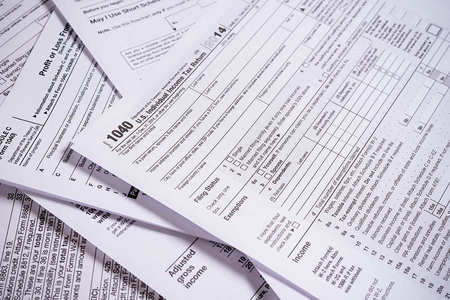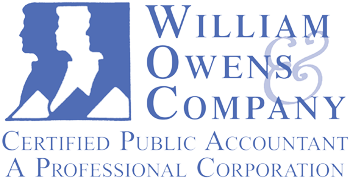
With the acceptance of the Tax Cuts and Job Act reform, we are now seeing the results of one of the most expansive tax law changes in nearly thirty years. With this came large changes to the forms and reporting structures themselves. No longer are Forms 1040-A or 1040-EZ available for use – everyone must file utilizing Form 1040. While the Form 1040 itself is greatly reduced, there is additional paperwork that may need to be completed in order to properly calculate your tax breaks and deduction. In June of 2018, the IRS released the first drafts of the form for review by its partners in the industry, and after revisions, Form 1040 was approved and released for public use. Much like prior years, the Form 1040 will utilize a summary of schedules format. Taxpayers with relatively straightforward tax situations will be able to file a Form 1040 with no numbered schedules. However, for those needing to file the form with additional supplemental information, the schedules are far more extensive, including income and adjustments, tax calculations, credits and designations.
With nearly ninety percent of the taxpayers using tax software, most of the changes will be nearly seamless. In fact, many may not even realize that there is a change if their software utilizes questions to complete the forms in the background. For most filers, even those with a bit more complexity, the first two pages still contain the most commonly used lines, so the difference may be negligible. For those using the additional forms, here are the more common ones and what they cover.
Form 1040, Page 1 will include only the name and identification number of each person on the return, the return filers address, the checkbox for healthcare coverage, the checkbox for the Presidential Election designation, and the signature line.
Form 1040, Page 2 will continue to include most of the lines that used to be contained on Page 1 of prior year returns. These are: wages, interest, dividends, retirement payments, and social security; as well as a summary of the other income items. The other items that used to be on Page 2, for the most part, remain. These are: standard or itemized deductions, refundable credits and withholding. It has added in income adjustments from Schedule 1, non-refundable credits from Schedule 3, and payments/credits from Schedule 5.
Schedule 1 will cover additional income items not listed above. These are: taxable refunds/credits, state offsets for income taxes, alimony received, Schedule C business income or loss, Schedule D capital gains income or loss, Schedule F farm income or loss, unemployment and other non-specifically named income. It also reports adjustments to income such as: educator expenses, business expenses reportable on Form 2106, health savings accounts, moving expenses, self-employment tax deduction, self-employed retirement plans, early withdrawal penalties, alimony paid, IRA deductions, and student loan interest deduction. This category includes prizes and award money and gambling winnings as well.
Schedule 2 will cover additional forms of taxation such as the alternative minimum tax and excess advance premium tax credit repayment.
Schedule 3 will cover nonrefundable credits such as Form 1116, child and dependent care expenses, education credits, retirement savings contributions credit, residential energy credits, as well as other non-specifically listed credits utilizing Form 3800 (General Business Credit) and/or Form 8801 (Credit for Prior Year Minimum Tax).
Schedule 4 will cover self-employment tax, unreported Social Security and Medicare, additional taxes on retirement plans, household employees, first-time homebuyer’s credit repayment, health care individual responsibility tax, and other non-specifically named taxes utilizing Form 8959 (Additional Medicare Tax) and/or Form 8960 (Net Investment Income Tax) and/or Form 965-A (Individual Report of Net 965 Tax Liability (Deferred Foreign Income).
Schedule 5 will cover other payments and refundable credits not appearing on Page 2. These are: estimated payments and amounts carried forward from 2017, premium tax credit, amount paid with extension, excess Social Security and tier 1 RRTA tax withheld, credit for federal fuels tax, and non-specifically named credits utilizing Form 2439 (Shareholder Undistributed Long-Term Capital Gains) and/or Form 8885 (Health Coverage Tax Credit). This also includes calculations for the Earned Income Credit, the American Opportunity Credit, and additional child tax credits.
Schedule 6 will cover foreign address and third-party designees.
The Qualified Business Income Deduction is also new this year and allows you to deduct up to twenty percent of your qualified business income from your qualified trade of business, plus twenty percent of your qualified real estate investment trust dividends and qualified publicly traded partnership income. This is an additional deduction for self-employed taxpayers, over and above the standard deduction or itemized deduction.
With the increase in the standard deduction, there can be some question of whether or not you need to file at all. Below are the tax thresholds for 2018, although there still may be other reasons you are required to or wish to file:
- Single, under 65 – $12,000
- Single, 65 or older – $13,600
- Married filing jointly, both spouses under 65 – $24,000
- Married filing jointly, one spouse 65 or older – $25,300
- Married filing jointly, both spouses 65 or older – $26,600
- Married filing separately, any age – $12,000
- Head of household, under 65 – $18,000
- Head of household, 65 or older – $19,600
- Qualifying widow(er) with dependent child, under 65 – $24,000
- Qualifying widow(er) with dependent child, 65 or older – $25,300
You may still need to file a return if you:
- You had at least $400 in self-employment income.
- You owe household employment taxes.
- Social Security and Medicare taxes are owed on unreported tip income.
- You received a distribution from a medical savings account (MSA) or a health savings account (HSA).
- You received an advance payment on the Premium Tax Credit.
- Expect to qualify for the Earned Income Tax Credit.
- You’re claiming education credits and must file to be refunded under the American Opportunity Credit.
- You want to claim a refundable Health Coverage Tax Credit.
- You adopt a child and want to claim the Adoption Tax Credit.
- You had wages of $108.28 or more from a church or qualified church-controlled organization that is exempt from employer Social Security and Medicare tax.
- You had withholding.
All IRS forms and instructions are available online at IRS.gov. Ordering forms may take up to ten business days to arrive.
